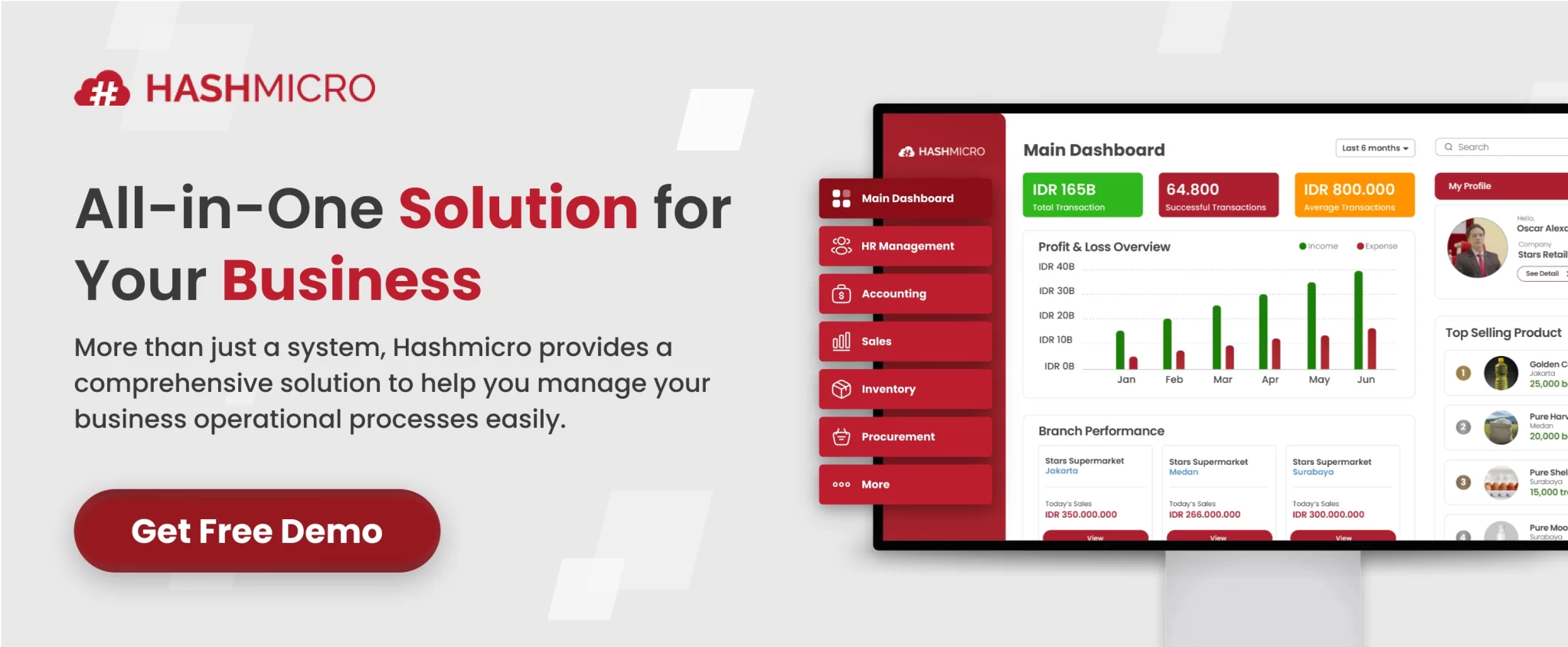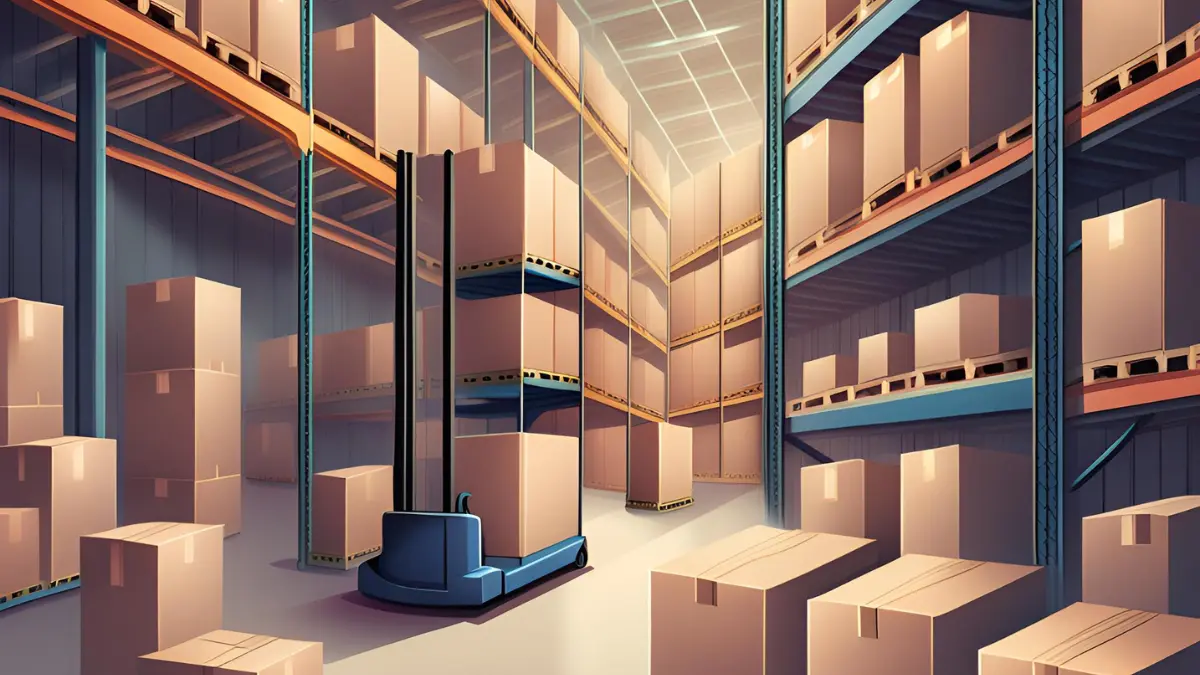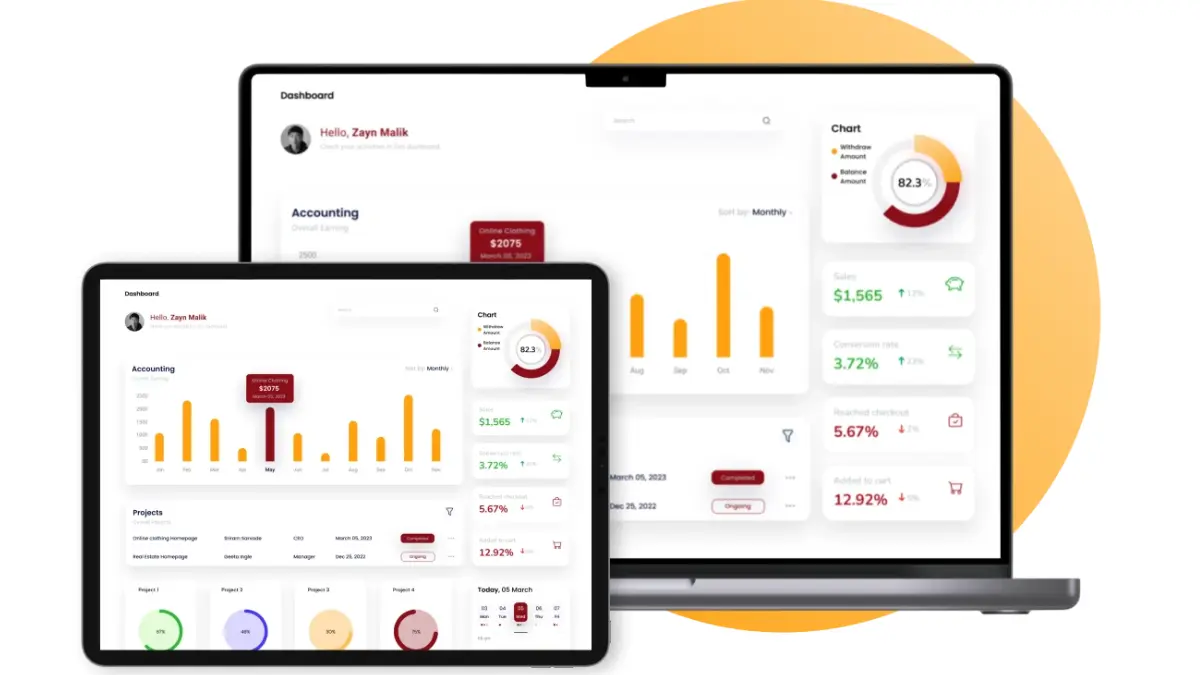Warehouse congestion occurs when a warehouse becomes overcrowded with inventory, equipment, or workers, causing delays and inefficiencies. This congestion makes it difficult for staff to navigate and complete tasks effectively, leading to operational bottlenecks that disrupt the flow of goods.
Without the right software, several problems arise that worsen warehouse congestion. Inefficient inventory tracking leads to overstocking or stockouts, slowing the entire process. Additionally, labor costs increase without software, while space optimization and demand forecasting become difficult, creating even more congestion during busy periods.
Investing in Warehouse Management Software (WMS) is crucial to addressing these challenges. A survey found that companies using WMS solutions saw a 20-30% increase in overall warehouse productivity by automating key processes such as receiving, putaway, picking, and shipping.
With features like directed putaway and optimized picking strategies, WMS helps reduce time spent locating and handling inventory, significantly easing warehouse congestion. To know more, this article will discuss what warehouse congestion is and strategies to prevent it for your Singapore business.
Table of Content:
Table of Content

Key Takeaways
|
What is Warehouse Congestion?
Warehouse congestion is the overcrowding, clutter, or excessive traffic within a warehouse that hinders movement and disrupts normal operations. Difficulty navigating the warehouse can impede inventory flow, impacting workers’ productivity and preventing them from completing their tasks efficiently.
Warehouse congestion occurs when a warehousing space becomes overcrowded, making it difficult for workers to move freely and efficiently. This obstructs inventory flow and slows down regular activities, causing delays that can disrupt operations.
When movement is restricted, workers find it challenging to complete tasks on time, decreasing productivity. Additionally, clutter and a lack of space can introduce safety hazards, increasing the risk of accidents in the workplace.
Addressing warehouse congestion is essential for maintaining smooth operations. By optimizing space and processes, businesses can ensure a more efficient and safer work environment for all employees.
Common Causes of Warehouse Congestion

By understanding the root issues, businesses can implement effective strategies to minimize congestion and ensure smooth operations.
1. Insufficient storage space
Warehouse congestion often stems from insufficient storage space, where too much inventory exceeds the warehouse’s capacity. This leads to storage congestion, making it difficult to move items efficiently.
As a result, your operations slow down, and managing stock becomes more challenging. To avoid this bottleneck, it’s crucial to assess storage needs regularly and ensure your space can accommodate your inventory.
2. Poor layout design
A poorly designed warehouse layout can severely impact warehouse efficiency. For example, workers are forced to take longer routes to complete tasks if aisles are too narrow for forklifts or equipment.
This not only wastes time but also creates a warehouse bottleneck, slowing down overall operations. Optimizing your layout ensures smooth workflow and minimizes congestion.
3. Inefficient processes and technology
Outdated processes and technology contribute significantly to warehouse congestion. Inefficiencies arise when workers follow procedures that don’t prioritize productivity or when unreliable systems hinder operations.
Modernizing technology and refining workflows can greatly enhance warehouse efficiency, reducing the impact of a congested warehouse. Upgrading your systems is a proactive step towards avoiding unnecessary slowdowns.
4. Delayed shipments
Workers struggle to pick, pack, and ship orders on time in congested warehouses. This delay frustrates customers as their deliveries arrive late, damaging your brand’s reputation.
To prevent shipment delays, it’s vital to streamline operations and eliminate storage congestion, ensuring orders move smoothly through the warehouse. Timely shipments are vital to maintaining customer satisfaction.
5. Customer dissatisfaction
Customer dissatisfaction rises when orders are delayed or errors occur due to warehouse bottlenecks. A congested warehouse makes it harder to pick the right items, leading to mistakes and damaged goods.
Furthermore, fulfillment errors become more frequent, causing even more incredible customer frustration. By improving warehouse efficiency, you can reduce these errors and keep your customers happy. Ultimately, a well-organized warehouse is crucial to maintaining a loyal customer base.
6. Increased costs
Inefficient operations in a congested warehouse increase labor costs as tasks take longer. Additionally, mismanaged inventory caused by storage congestion can result in costly stockouts or overstocking.
Investing in better processes and technology will reduce costs and improve your bottom line by enhancing warehouse efficiency. This proactive approach ensures smoother, cost-effective operations.
7. Increased shipping mistakes
Shipping mistakes are more frequent in congested warehouses due to poor organization and rushed processes. When workers are pressured to meet deadlines in an overcrowded environment, the likelihood of errors increases.
Addressing these bottlenecks by optimizing space and processes can significantly reduce shipping errors, leading to more accurate and timely deliveries.
To tackle this issue effectively, you may consider using the right software, such as HashMicro’s Warehouse Management System (WMS), Singapore’s leading warehouse management system that offers comprehensive tools to streamline operations. For more details, click the banner below!
The Consequences of Warehouse Congestion
Warehouse congestion may seem minor, but its impact on operations can be significant. From delayed shipments to increased labor costs, the consequences of an overcrowded warehouse can ripple through every aspect of your business.
Understanding these effects is crucial for preventing operational bottlenecks and maintaining efficiency.
- Specific areas becoming overrun by too much activity: When certain areas face too much activity, like picking and replenishing stock in the same space, processes slow down significantly. This overlap creates a warehouse bottleneck, leading to inefficiencies as workers struggle to move within congested warehouses.
- Frequent traffic jams: Congested warehouses often experience traffic jams as vehicles and workers converge in the exact location simultaneously. This frequent blockage shows storage congestion, further reducing warehouse efficiency and disrupting smooth operations.
- A drop in customer satisfaction levels: Warehouse congestion can lead to delayed order fulfillment, causing confusion and errors that directly impact customer satisfaction. As customers experience delays or receive incorrect items, their confidence in your service drops, harming your reputation.
- Rising labor costs with lower productivity: Adding more workers to an already congested warehouse may seem logical, but it often leads to rising labor costs with minimal productivity gains. The real issue lies in the lack of movement and poor warehouse efficiency, not the number of employees.
5 Tips to Deal With Warehouse Congestion
Dealing with warehouse congestion is crucial for maintaining smooth operations and maximizing efficiency. When spaces become overcrowded, they slow down processes and increase operational costs and risks.
To ensure your warehouse remains organized and productive, here are five effective strategies to tackle congestion.
1. Optimize warehouse layout
A well-organized layout improves warehouse efficiency by reducing unnecessary movement and handling. By placing high-demand items closer to packing stations, you can significantly reduce picking times.
Additionally, designing aisles to fit your equipment while maintaining optimal space helps prevent warehouse bottlenecks. This ensures a smoother workflow, reducing the risk of congested warehouses. Implementing barcode tracking software can further streamline inventory management by ensuring precise location tracking and reducing misplaced items.
2. Implement lean inventory management
Adopting lean inventory management reduces storage congestion by minimizing excess stock and waste. Practices like Just-In-Time (JIT) delivery allow goods to arrive only when needed, freeing up valuable warehouse space.
This streamlined approach helps improve overall warehouse efficiency, ensuring that items are stored efficiently without clutter. Ultimately, it cuts carrying costs and maintains better stock control.
3. Upgrade Warehouse Management System
Upgrading your Warehouse Management System (WMS) can automate key tasks, reduce manual errors, and boost efficiency. With real-time data, a modern WMS helps optimize inventory levels and prevent overstocking, a major cause of warehouse congestion.
This system improves the flow of goods and enhances decision-making, ensuring smooth and organized operations within the warehouse.
If you’re looking for the best WMS Singapore solution, HashMicro offers an advanced system to optimize your warehouse management. Try a free demo now and experience how HashMicro can transform your operations!
4. Improve demand forecasting
Accurate demand forecasting is essential for managing stock levels effectively and avoiding shortages and overstocking. Businesses can better predict inventory needs and avoid storage congestion by analyzing historical data and market trends.
Improved forecasting ensures a leaner inventory, reducing clutter and enhancing the flow of goods through the warehouse, especially during peak seasons when congestion is most likely to occur.
5. Consider outsourcing fulfillment to 3PL
Outsourcing fulfillment to a Third-Party Logistics (3PL) provider can significantly reduce the burden on in-house operations, easing storage congestion. 3PL providers offer specialized services and scalable solutions, allowing businesses to focus on core operations without the constraints of managing congested warehouses. This improves warehouse efficiency and allows for greater flexibility in meeting customer demands.
Prevent Warehouse Congestion with HashMicro’s Warehouse Management Software
HashMicro’s warehouse management system is one of the top solutions in Singapore. It is designed to tackle storage congestion and improve warehouse efficiency. Its advanced features help streamline operations, ensuring businesses can avoid common bottlenecks and maintain a smooth workflow.
To experience these benefits firsthand, we invite you to try HashMicro’s free demo. This will give you a clear understanding of how their WMS can be tailored to solve your warehouse congestion issues and enhance overall productivity.
Below, we’ll highlight some of the standout features offered by HashMicro’s Warehouse Management Software:
- RFID warehouse rack stock automation: Using this feature, you can automate stock management on warehouse racks, improving accuracy and reducing manual labor.
- Barcode, lot, and serial number tracking: This feature ensures precise inventory tracking through barcodes, lot numbers, and serial numbers, enhancing traceability and control.
- Cycle time analysis: With cycle time analysis, you can monitor and optimize the time taken for various warehouse processes, boosting overall efficiency.
- Stock optimizer per warehouse: This feature helps you optimize stock levels in each warehouse, ensuring balanced inventory and preventing overstock or stockouts.
- 3D view of stock location: The 3D view of stock locations allows you to visualize and easily locate items in the warehouse, speeding up retrieval and organization.
- Removal strategy management: This feature allows you to implement efficient removal strategies, minimizing storage congestion and ensuring smooth inventory flow.
- Pick, pack, delivery 3-step route warehousing: Using the 3-step route for pick, pack, and delivery, you can streamline the fulfillment process, reducing errors and improving warehouse efficiency.
- Comprehensive reporting/analytics: Comprehensive reporting and analytics provide valuable insights into warehouse performance, enabling better decision-making and process optimization.
These features are designed to optimize every aspect of your warehousing operations, making it easier to manage even the most complex logistics challenges.
In addition to these powerful features, HashMicro provides extensive customization options to meet the specific needs of complex businesses. The system also integrates seamlessly with third-party platforms, ensuring a comprehensive and adaptable solution for your warehouse management.
Conclusion
In managing a warehouse effectively, businesses can prevent warehouse congestion and ensure smoother operations. Utilizing the right software solutions is critical to maintaining warehouse efficiency and avoiding costly delays.
One of the best software solutions for avoiding warehouse congestion is HashMicro’s warehouse management system. Its advanced features streamline inventory management, optimize space utilization, and eliminate bottlenecks, making it an ideal choice for businesses looking to enhance their operations.
To see how HashMicro WMS can transform your warehouse, sign up for a free demo today and experience the benefits firsthand.

FAQ About Warehouse Congestion
-
How do you optimize warehouse capacity?
Optimizing warehouse capacity involves improving layout design, implementing better inventory management systems, and utilizing vertical storage solutions. Maximizing space and streamlining operations can significantly enhance warehouse efficiency and reduce bottlenecks.
-
Is it possible to eliminate warehouse congestion?
While it may be challenging to eliminate congestion entirely, it can be significantly reduced through better inventory management, upgrading technology, and optimizing workflow processes. A well-organized warehouse leads to smoother operations and fewer delays.
-
What is congestion in logistics?
Port congestion occurs when there is a backlog of ships waiting to load or unload cargo at a port, causing delays and disruptions to the normal flow of operations.
-
What is the bottleneck effect in logistics?
A bottleneck is a delay in the normal flow of transportation. Congestion is a persistent and costly issue for the transportation and logistics industries, and some areas of the country face greater delays than others.


























































